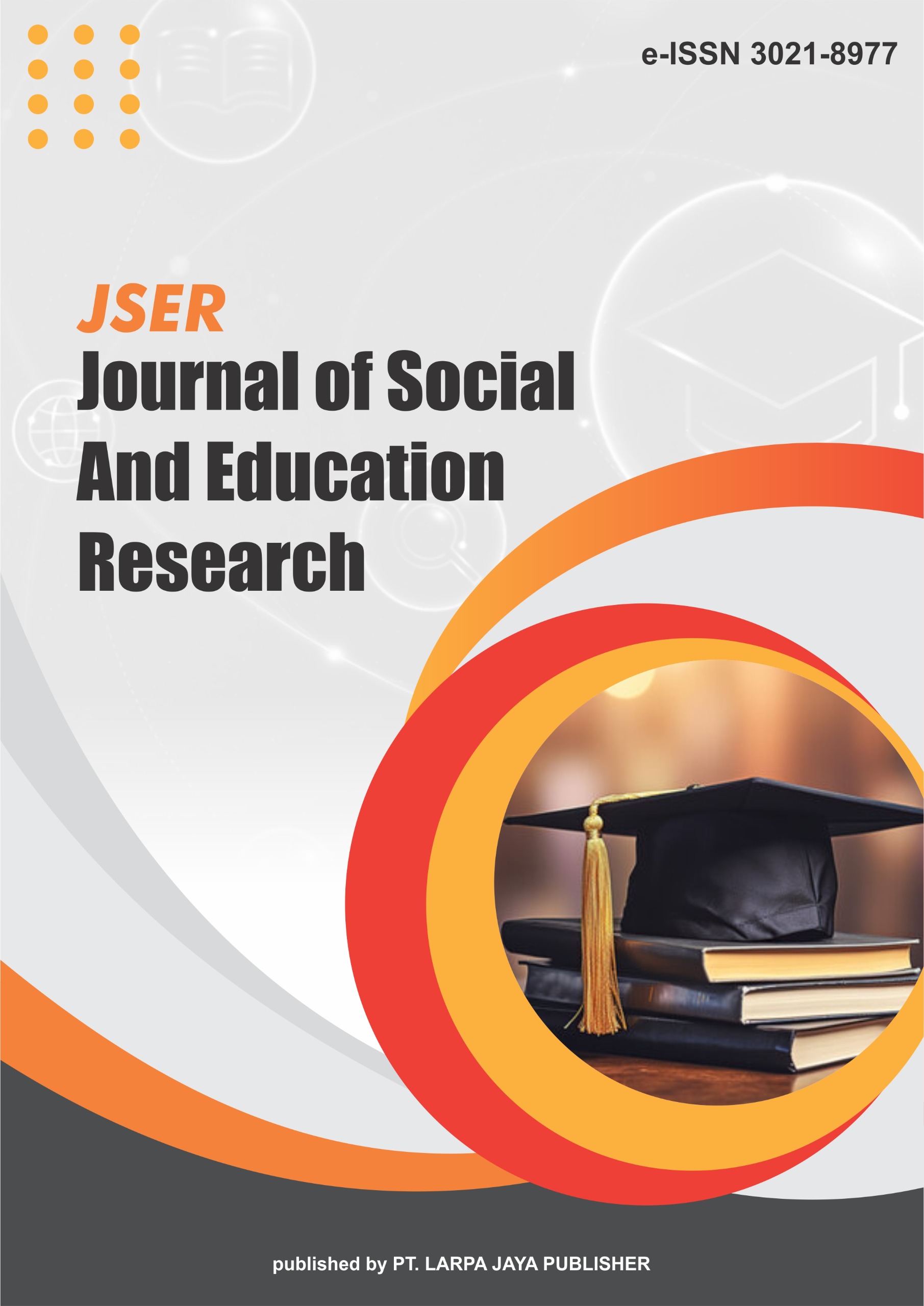Design of Inclusive Green Open Spaces as a Medium for Intergenerational Social Interaction in Urban Areas
DOI:
https://doi.org/10.63265/jser.v1i3.157Keywords:
inclusive design, green open space, social interaction, intergenerational, urban sustainabilityAbstract
. Inclusive green open spaces play a vital role in enhancing the quality of urban life by promoting social interaction, environmental sustainability, and psychological well-being. This study aims to explore the concept and design principles of inclusive green open spaces as a means of fostering intergenerational social interaction in urban areas. Using a literature review design, this research analyzes eight selected scientific articles published between 2010-2023 that discuss inclusive urban design, social interaction, and sustainable public spaces. The results indicate that inclusive design emphasizing accessibility, safety, comfort, and multifunctionality creates opportunities for interaction among various age groups and social backgrounds. Furthermore, the integration of ecological functions with social needs contributes to environmental sustainability and urban resilience. Community participation and universal design principles are identified as key elements in ensuring that green open spaces are equitable and responsive to the needs of all users. This study concludes that the development of inclusive green open spaces not only supports sustainable urban planning but also strengthens social cohesion and intergenerational connections within cities.
References
Abraham, A., Sommerhalder, K., & Abel, T. (2010). Landscape and well-being: A scoping study on the health-promoting impact of outdoor environments. International Journal of Public Health, 55(1), 59–69.
Byrne, J., & Wolch, J. (2016). Nature, race, and access to greenspace: A review of contemporary issues. Progress in Human Geography, 40(6), 807–836. https://doi.org/10.1177/0309132516659707
Carmona, M. (2019). Principles for public space design, planning to do better. Urban Design International, 24(1), 47–59.
Carmona, M. (2021). Public Places Urban Spaces: The Dimensions of Urban Design (3rd ed.). Routledge.
Dempsey, N., Burton, M., & Duncan, R. (2020). Evaluating the social sustainability of urban regeneration: Learning from the United Kingdom. International Journal of Urban Sustainable Development, 12(3), 321–337.
Firman, T., Kombaitan, B., & Pradono, P. (2019). The continuity and change of mega-urbanization in Indonesia: A survey of Jakarta–Bandung region. Habitat International, 89, 102–111.
Gehl, J. (2010). Cities for People. Island Press.
Gehl, J. (2011). Life Between Buildings: Using Public Space. Island Press.
Hartig, T., Mitchell, R., de Vries, S., & Frumkin, H. (2014). Nature and health. Annual Review of Public Health, 35(1), 207–228. https://doi.org/10.1146/annurev-publhealth-032013-182443
Jennings, V., & Bamkole, O. (2019). The relationship between social cohesion and urban green space: An avenue for health promotion. International Journal of Environmental Research and Public Health, 16(3), 452.
Kabisch, N., Qureshi, S., & Haase, D. (2017). Human–environment interactions in urban green spaces: A systematic review. Urban Forestry & Urban Greening, 21, 49–62.
Maas, J., Verheij, R. A., Spreeuwenberg, P., & Groenewegen, P. P. (2017). Physical activity as a possible mechanism behind the relationship between green space and health: A multilevel analysis. BMC Public Health, 17, 485.
Marcus, C. C., & Francis, C. (2013). People Places: Design Guidelines for Urban Open Space (3rd ed.). Wiley.
Nasution, A. D., & Zahrah, W. (2014). Community perception on public open space and quality of life in Medan, Indonesia. Procedia - Social and Behavioral Sciences, 153, 585–594.
Nordh, H., & Østby, K. (2013). Pocket parks for people: A study of park design and use. Landscape and Urban Planning, 112, 31–42. https://doi.org/10.1016/j.landurbplan.2012.12.009
Peters, K., Elands, B., & Buijs, A. (2010). Social interactions in urban parks: Stimulating social cohesion? Urban Forestry & Urban Greening, 9(2), 93–100. https://doi.org/10.1016/j.ufug.2009.11.003
Pradana, A., & Nurhidayati, L. (2022). Ruang terbuka hijau sebagai sarana interaksi sosial multigenerasi di Yogyakarta. Jurnal Arsitektur dan Perkotaan, 10(2), 101–114.
Puspitasari, D., & Widyawati, F. (2020). Inklusivitas ruang publik kota: Studi pada taman kota di Surabaya. Jurnal Tata Ruang dan Lingkungan Binaan, 9(1), 65–78.
Sugiyama, T., & Thompson, C. W. (2013). Environmental support for outdoor activities and older people’s quality of life. Journal of Environmental Psychology, 33, 37–44. https://doi.org/10.1016/j.jenvp.2012.10.001
Steinfeld, E., & Maisel, J. (2012). Universal Design: Creating Inclusive Environments. Wiley.
Ward Thompson, C. (2013). Activity, exercise, and the planning and design of outdoor spaces. Journal of Environmental Psychology, 34, 79–96.
Downloads
Published
How to Cite
Issue
Section
License
Copyright (c) 2023 Journal of Social And Education Research

This work is licensed under a Creative Commons Attribution-NonCommercial 4.0 International License.










